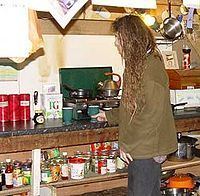 | ||
Welcome to camp bling 2009 short documentary full
Camp Bling, the long running UK based road protest camp was set up in Southend-on-Sea in Essex during September 2005 to obstruct a £25m plan to widen the Priory Crescent section of the A1159 road over the Royal Saxon tomb in Prittlewell. In April 2009 the authority announced that plans to build the road had been abandoned and the camp was disbanded in July 2009.
Contents
- Welcome to camp bling 2009 short documentary full
- Camp bling take me home wmv
- History
- The camp
- References
Camp bling take me home wmv
History
Southend of Sea council proposed the 'Priory Crescent road widening scheme' and a public inquiry was held in 2004. The council proceeded with the scheme, estimated at £25 million, explaining that it was important to Southend and that a democratic decision had been taken after considering opposing views. During early excavations an Anglo-Saxon king's burial chamber was discovered which was described by British archaeologists as "the most spectacular discovery of its kind made during the past 60 years".
The road would have resulted in the felling of 111 trees and a loss of 300 square metres (3,200 sq ft) of public green space. 20,000 signatories completed petitions against the road.
Of those responding to the official Winter 2001 Civic News survey, only 16 people were in favour of the proposals from a delivery area covering all Southend households.
At a meeting with the council on 23 April 2009 the authority told the protesters that the road widening scheme had been abandoned and the protesters agreed to leave within 3 months.
The camp
The camp was situated between a main road and a railway line. The site consisted of a large communal area, a visitors centre and several personal dwellings. All buildings were made from re-cycled materials. The communal area featured seating, heating and a bookcase. The buildings were heated by wood burning fires and run off donated wood. Water was collected on a daily basis. Food was cooked on a calor gas oven and there was a composting toilet. A wind generator provided some of the evening lighting.
